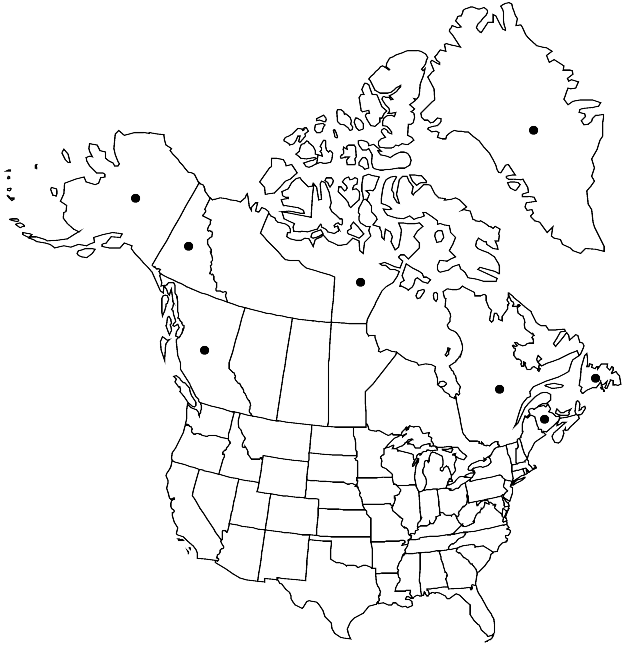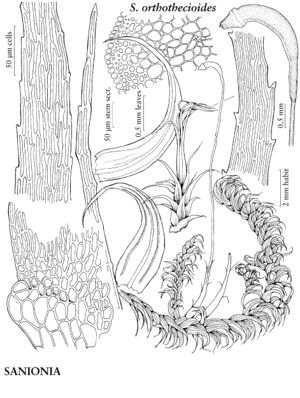Sanionia orthothecioides
Hedwigia 46: 309. 1907.
Plants medium-sized to large. Stems unbranched, sparsely and irregularly branched, or rarely ± pinnate. Stem leaves falcate or strongly falcate, more rarely straight or almost so, strongly or sometimes slightly plicate, 0.6–1.5 mm wide; base ovate-triangular to broadly ovate; margins partly or entirely recurved (most distinct in ventral leaves), sometimes incurved proximally, finely denticulate or almost entire distally; apex long- or very long-acuminate; costa in bottom of deep narrow-angled fold; alar region transversely triangular, transition to supra-alar cells sudden, supra-alar cells quadrate or short-rectangular, chlorophyllose, walls slightly or strongly incrassate, porose, region equal in size to or much larger than alar region; apical laminal cells smooth. Perichaetia with inner leaves gradually narrowed to apex, margins finely denticulate to denticulate distally, apex long-acuminate. Capsule erect or inclined; exothecial cells isodiametric or transversely rectangular, in 3–7 rows; exostome specialized, teeth long, narrow, border not widened at transitional zone in pattern of external tooth; endostome specialized, in recently dehisced capsules strongly yellow, basal membrane constituting 20–30% endostome height, processes perforated only along midline, cilia rudimentary.
Habitat: Coastal, inland, open habitats, rock crevices, meadows
Elevation: low elevations
Distribution

Greenland, B.C., N.B., Nfld. and Labr. (Nfld.), Nunavut, Que., Yukon, Alaska, n Eurasia.
Discussion
Sanionia orthothecioides is normally considerably larger than the other three members of the genus. The species is easily separated from S. uncinata by its reduced and strongly yellow endostome. From S. uncinata and S. symmetrica it differs by its many (3–7 as compared with 1–4) rows of isodiametric or transversely rectangular cells below the capsule mouth, and by the structure of its alar and supra-alar cells. The leaf margin is usually recurved in S. orthothecioides, more rarely so in the other three species, and the costa is usually situated in the bottom of a deep fold in the proximal portion of the leaves in the first species, which is rare in the other three.
Selected References
None.
